The Electronic Intifada London 2 January 2013
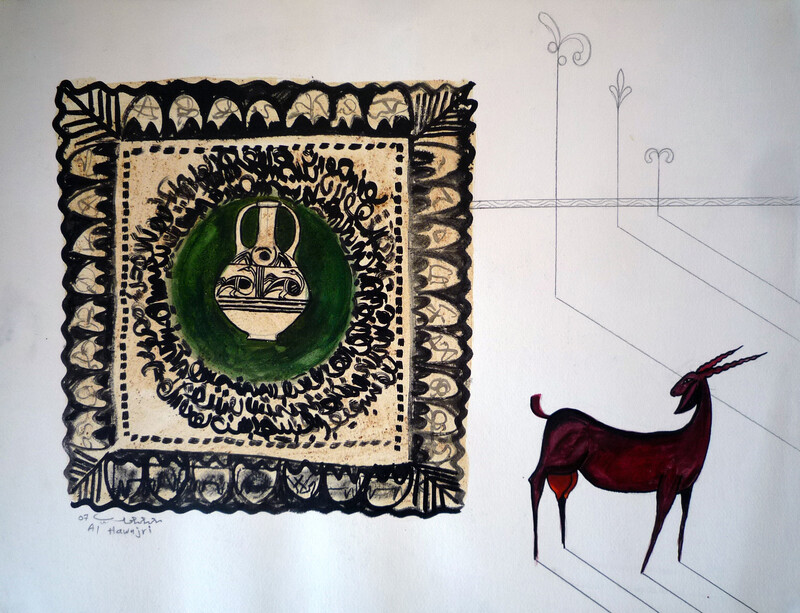
From Mohammed al-Hawajri’s “Soul & Fragrance” series. (Image courtesy of Arts Canteen)
“These artists have all the right in the world to be on a platform, to have their work seen with dignity, like any other artists,” said Aser El Saqqa, a curator of an exhibition of Palestinian paintings recently displayed in Britain.
Born and raised in Gaza, El Saqqa is justly proud of Despite, as the exhibition at the Richmix arts center in east London was called. He assembled this collection, along with Nicola Gray and the organization Arts Canteen.
Despite has been an important exhibition for many reasons. It is probably one of the largest collections of art from Gaza ever shown, at least outside the Middle East. Nine of the sixteen artists represented at the December show are still based in Gaza.
“Yes, getting some of the works here was a challenge,” El Saqqa told The Electronic Intifada. But it was also imperative that the show included work from painters in the West Bank, the Galilee and Jerusalem. “All parts of Palestine,” he added.
The show has also been significant in displaying the breadth and quality of contemporary Palestinian painting. Some of the best-known Palestinian artists — Emily Jacir, Larissa Sansour — mainly work in photography, installation and conceptual pieces. Despite illustrated the range of talent — both new, such the youthful Dina Mattar, and established, such as Hani Zurob — using more conventional media, but with a great variation of visions and methods.

Tayseer Barakat’s painting of a Gaza refugee camp. (Image courtesy of Arts Canteen)
Playing with images
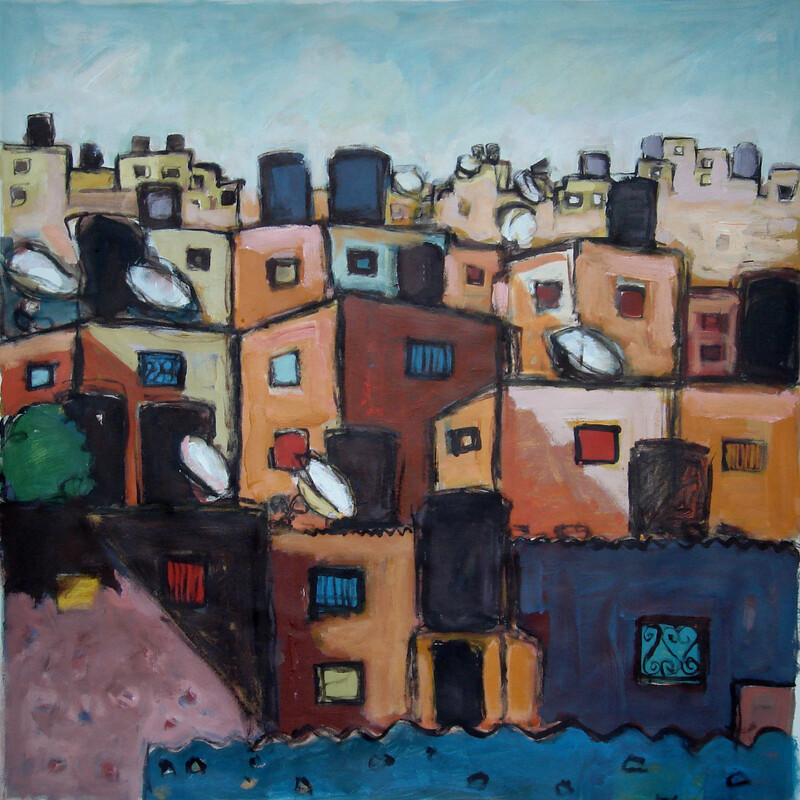
Raed Issa’s “Satellites.” (Image courtesy of Arts Canteen)
Tayseer Barakat and Raed Issa tackle the subject of refugee camps. Their work draws on their experiences of life in Jabaliya and al-Bureij camps in Gaza.
But where Barakat’s camp is portrayed as an ethereal, misty world in pinks and grays, beautiful at a distance but impersonal and anonymous, Issa’s is composed of blocks of striking color, with clear blue skies above and welcome shade between the houses and, in every image, always a green tree sprouting from the close-packed homes. The arrays of satellite dishes on the rooftops hint at the electronic means which many Palestinians must resort to for contact with the outside world, while the black plastic water-tanks are both vital for life and a frequent target for Israeli soldiers.
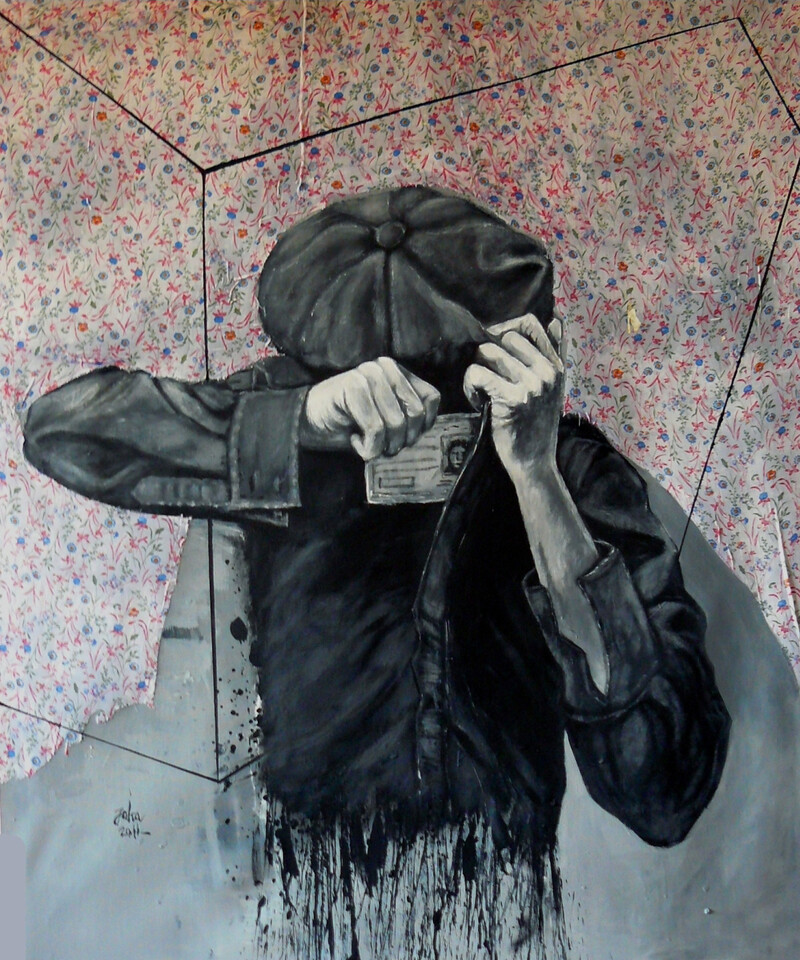
Mohammed Joha’s “Who Am I?” (Image courtesy of Arts Canteen)
Gaza-born Mohammed Joha’s large canvases, meanwhile, play with images and references to ask questions about identity and freedom. In “Behind the Wall,” a bright blue car with a pink parachute appears to have risen up above the ominous black wall. Or is it preparing to do so? Is it trying to escape, or has it already managed? And are the puffs of white smoke beyond it the remnants of a phosphorous burst, from one of the slowly-descending bombs which the parachute might also refer to?
Joha’s “Who Am I?” features a figure with a black hat pulled down low and the shirt collar pulled up; we assume from the clothes that it is a man, but the hands brandishing the ID card are slender and beautiful, and the darkness of the figure is juxtaposed against a background of floral patterns, like a mother’s housedress or a little girl’s bedroom. The painting is another point in a long history of artistic representations of the ambiguous, constraining significance of ID cards in Palestinian life, perhaps the best known example being Mahmoud Darwish’s poem “Write Down … I Am An Arab.”
Stubborn cactus
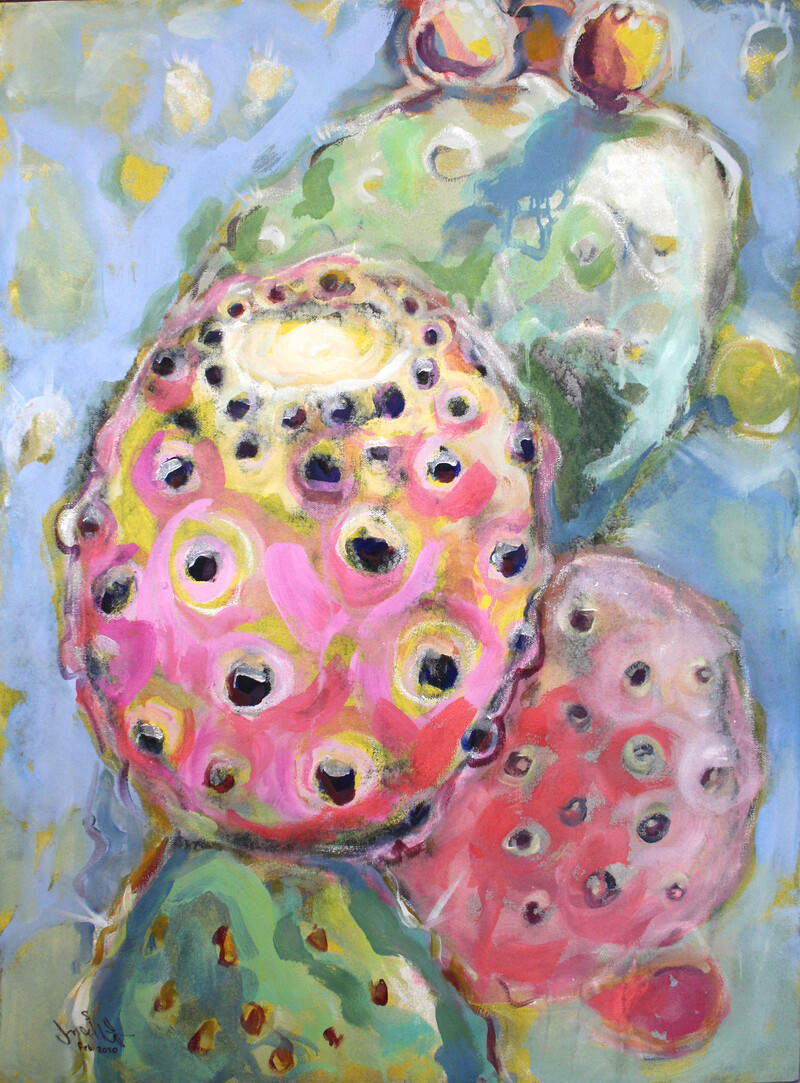
From Mohammed Abusal’s “lights” series. (Image courtesy of Arts Canteen)
A number of the less figurative works in the exhibition use Arabic script as a motif. Majed Shala’s works in vibrant oranges, red and blues feature vague human forms composed of torn-up pieces of Arabic calligraphy. The titles — “Exposed,” “Dialogue,” “Motherhood under siege” — refer to aspects of Palestinian life. Nabil Anani and Mohammed al-Hawajri’s images also take calligraphy, combining it with decorative elements and classical Arabic artistic motifs to situate Palestinian art within the long traditions of the wider Arab world and culture.
Very far from these contemporary takes on ancient Arabic styles are the still-lifes of Mohammed Abusal. His “lights” series, ranging from wedding lanterns to domestic lamps, hint at the importance of light, from celebrations to Gaza’s daily power cuts. A huge pink prickly pear cactus indicates that the plant is, among other things, a marker of destroyed Palestinian villages and a symbol of resilience and stubbornness bringing forth sweet fruit even without water.
“I like to think of it as a place where unwanted things like snakes can take refuge,” El Saqqa explained. Abusal grows dozens of these cacti on the roof of his Gaza City home, so that he can observe them throughout the seasons.
Subtle
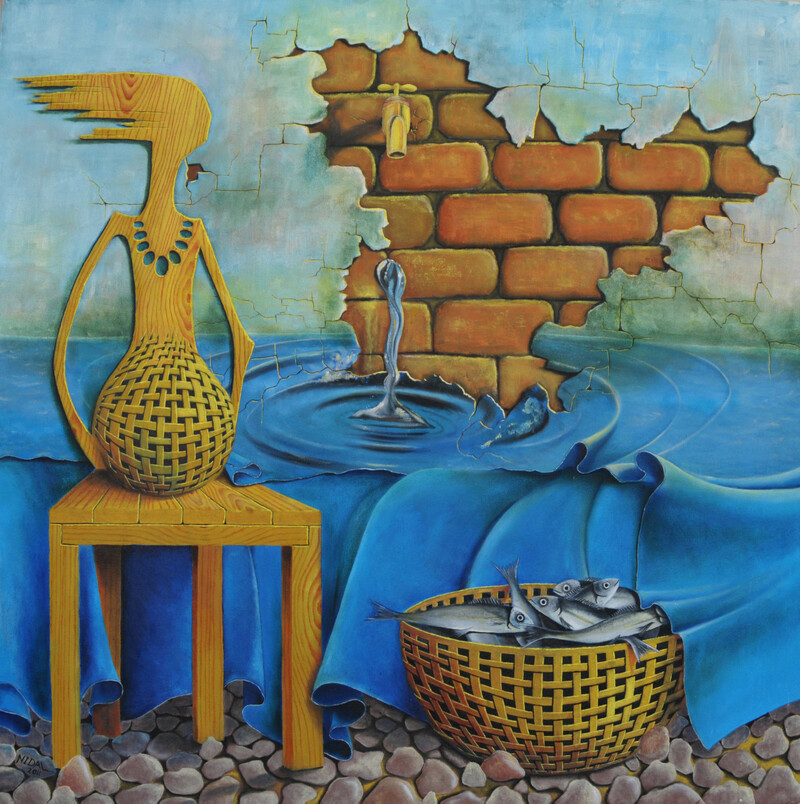
Nidal Abu Oun’s “The Fisherman’s Daughter” (Image courtesy of Arts Canteen)
Also deeply evocative of Gaza life is Nidal Abu Oun’s “The Fisherman’s Daughter,” with its Salvador Dali-inspired vivid colors and precise brushwork. In classic surrealist style the images are allusive and multi-layered; the daughter is fused into her latticework chair, from which a heavily-pregnant belly protrudes. A basket of fish sits by her, in front of — what? The sea, or water pouring from a cracked wall, from which a dry tap pokes out? The girl and her homely surroundings have a sense of stillness and patience, but is it the terrible patience of the woman who never knows if her menfolk will return from their dangerous work?
“One person who came to the launch of the exhibition asked, ‘but where is the Palestinian flag?’” said El Saqqa. Each of these paintings, and the others in the exhibition, echo his response — “it’s in every canvas.”
While the occupation forces every Palestinian to be “political” in some sense by their very insistence on life, Despite has shown that Palestine’s artists can negotiate and explore those politics in a myriad of different and subtle ways.
Sarah Irving is a freelance writer. She worked with the International Solidarity Movement in the occupied West Bank in 2001-02 and with Olive Co-op, promoting fair trade Palestinian products and solidarity visits, in 2004-06. She is the author of a biography of Leila Khaled and of the Bradt Guide to Palestine and co-author, with Sharyn Lock, of Gaza: Beneath the Bombs.



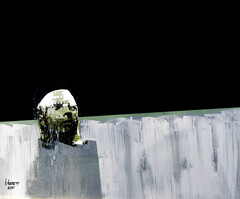


Comments
Thank you, Sarah Irving
Permalink Nancy Harb replied on
Sarah Irving's writing is analytic as well as moving. I always look forward to her stories.
Have you read her book on
Permalink ak replied on
Have you read her book on leila khaled? Its great.
Thank you both!
Permalink Sarah Irving replied on
... for your very kind words. Much appreciated.